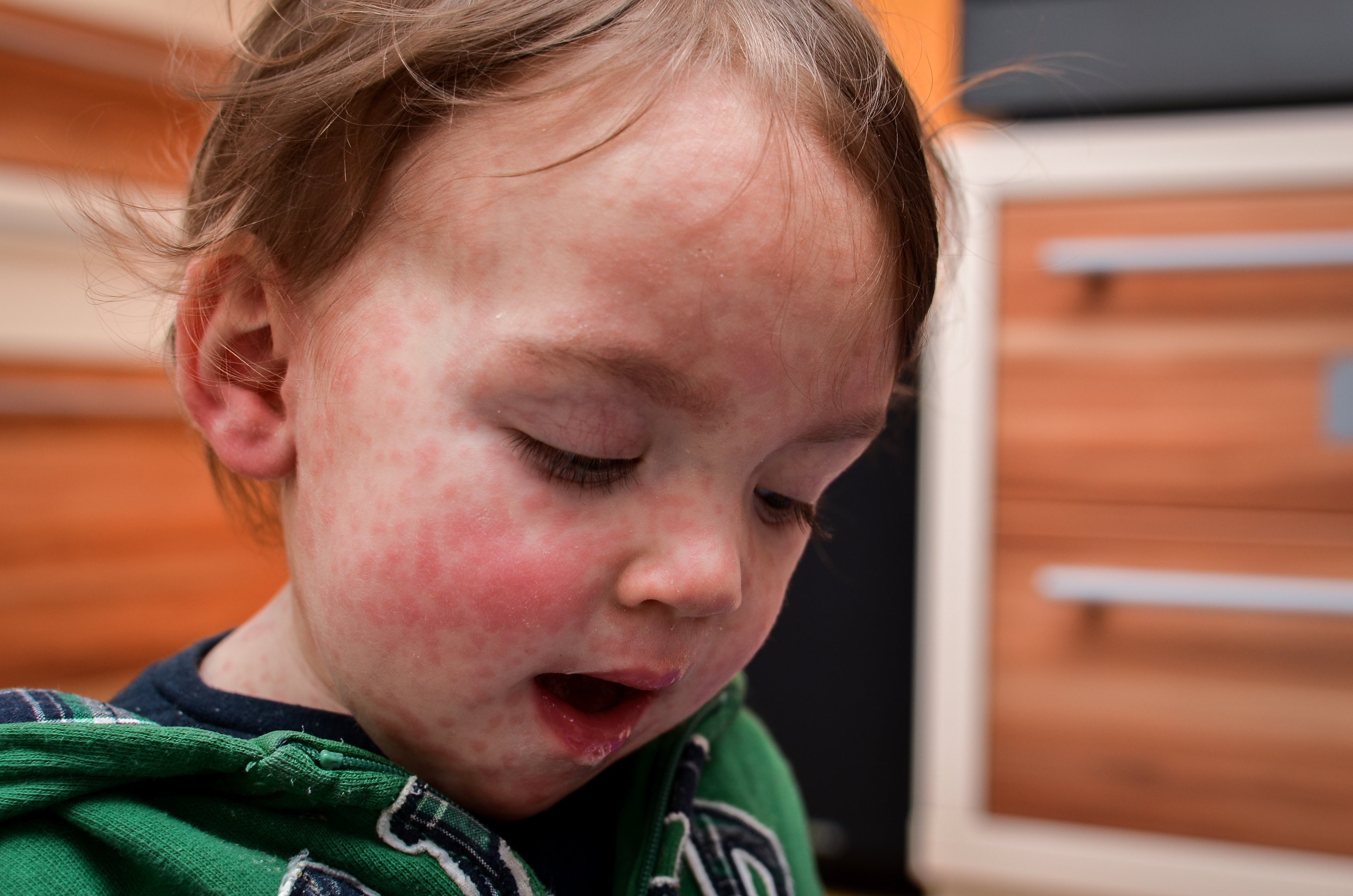Measles
A highly contagious viral respiratory illness
Overview
Measles is a highly contagious disease caused by the measles virus. Measles can cause serious health complications, especially for babies and young children. Two doses of MMR vaccine provide the best protection against measles.
The measles virus travels through the air. A sick person can spread measles by coughing, sneezing, breathing, or talking. People can get measles when they breathe air with the measles virus, or if they get the virus on their hands and touch their face. Measles can stay in the air for up to two hours, so people can get measles even after a sick person has left the area.

Public Health Emergency: Report Immediately
Public Health Emergency: Report Immediately
Providers and laboratories must report this condition immediately.
To report a Public Health Emergency
- Business Hours (8 a.m.-4:30 p.m.): 907-269-8000
- After Hours: 800-478-0084
For more information, visit Report a Health Condition
Symptoms & Diagnosis
Symptoms:
Measles symptoms usually appear 7-14 days after exposure to an infected person.
Symptoms may Include:
- Cough
- Runny Nose
- High Fever
- Conjunctivitis (Red, watery eyes)
- Koplik spots (white spots inside the mouth)
- Rash (which begins at the face and spreads down the body)
Call your healthcare provider right away and tell them about your symptoms. They can guide you on the next steps and, if needed, arrange a safe way to evaluate you without exposing others.
Diagnosis:
A doctor or health care provider can test you for measles. Polymerase chain reaction (PCR) is the preferred testing method for measles, through a throat or nasopharyngeal swab after onset of rash.
Treatment
Measles treatment involves comfort measures and symptom management. Ensure plenty of rest and hydration. There is no cure for measles, the infection must run its course. Isolate infected patients for 4 days after they develop a rash and follow airborne precautions in healthcare settings.
Prevention
MMR vaccines are the best defense against the disease and its complications. CDC recommends two doses of MMR (measles, mumps, rubella) vaccine for:
- Children: one dose at 12 months of age and another at 4–6 years.
- Older children, adolescents and adults without documented doses of MMR vaccine.
Unsure if you’re vaccinated against measles? Check your Vaccine Record on Docket or ask your healthcare provider. If no records exist, get vaccinated.
For providers
Reporting
Reporting
Providers and laboratories must report this condition immediately.
To report a Public Health Emergency
- Business Hours (8 a.m.-4:30 p.m.): 907-269-8000
- After Hours: 800-478-0084
For more information, visit Report a Health Condition
Treatment
Treatment
- Isolate suspect patient until 4 days after onset of rash and susceptible contacts on day 5-21 post-exposure.
- Vaccinate those persons who are unvaccinated with 2 doses of MMR, 4 weeks apart. If given within 72 hours of exposure, measles vaccine can provide protection or disease modification in some cases.
- Immune Globulin (Human) may be used within 6 days of exposure for susceptible household or other high- risk individuals (such as those < 12 months old).
Sample collection for lab testing
Sample collection for lab testing
Polymerase chain reaction (PCR) is the preferred testing method for measles, and it is available through commercial reference laboratories including LabCorp, Quest, and Mayo Reference Laboratories., as well as through the Alaska State Virology Laboratory (ASVL) in Fairbanks. Measles IgM testing is frequently falsely-positive and is not preferred. For specific testing guidance see Alaska State Public Health Laboratory Test Directory.
- Contact SOE immediately to facilitate testing: 907-269-8000, or 800-478-0084 after hours.
- For patients presenting <7days of rash onset, request a PCR test:
- Obtain a throat or nasopharyngeal swab; use a synthetic swab (i.e., Dacron) and place into viral transport media (VTM) or universal transport media (UTM).
- For patients presenting >7days after rash onset: additional specimens may be indicated, consult guidance on page 40 of the Alaska State Public Health Laboratory Test Directory.
- Store all specimens at 4°C and ship on cold packs in a proper insulated shipper box. Ship as a UN3373 Biological substance, Category B.
- Alaska State Virology Lab Form
- Supplies can be requested for NP swabs, UTM, or insulated shippers by faxing the Supply Request Form to the Fairbanks Laboratory (ASVL).
Resources
CDC Measles Resources
- Clinical Overview of Measles- CDC
- Plan for Travel- CDC
- View latest U.S. Surveillance data from CDC
- Measles - Vaccine Preventable Diseases Surveillance Manual (CDC)
- CDC Pink Book chapter on measles
- CDC Measles Vaccine Recommendations